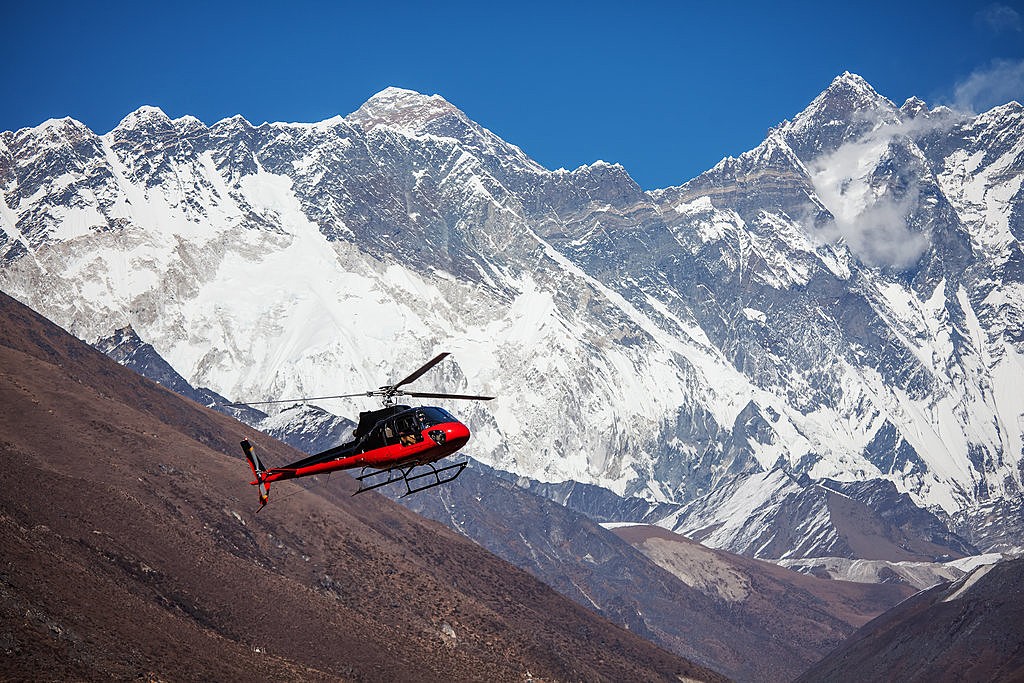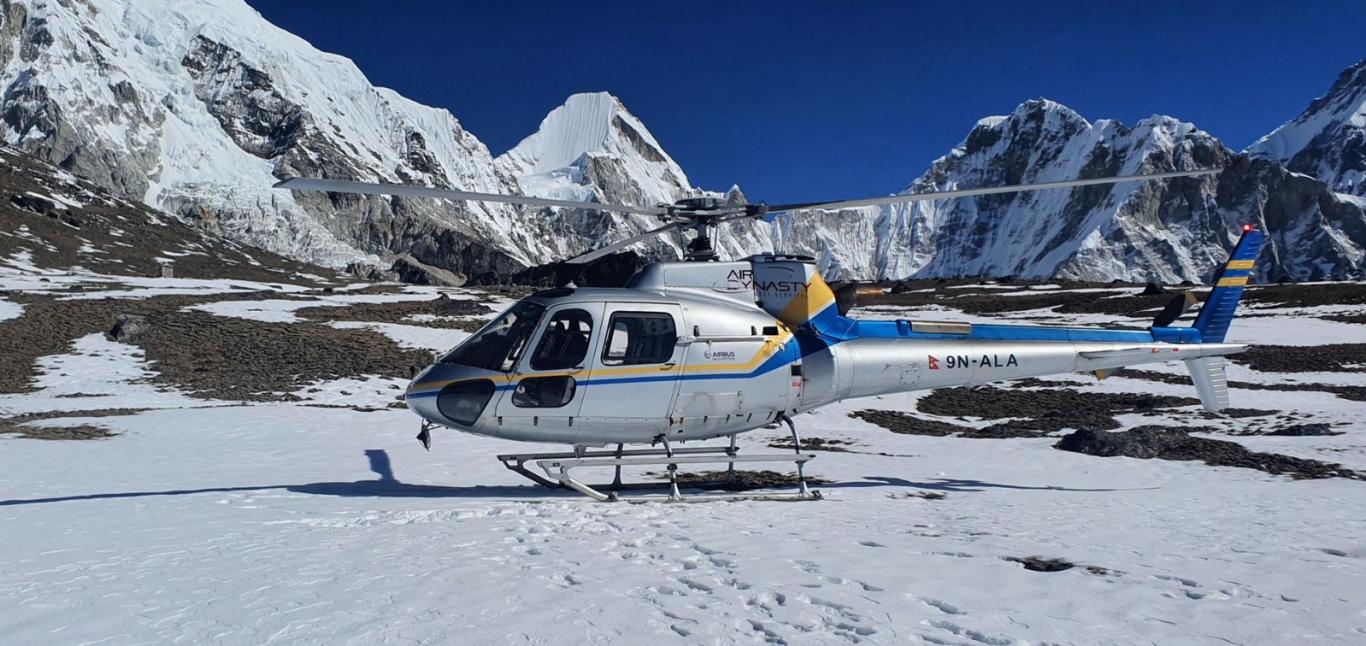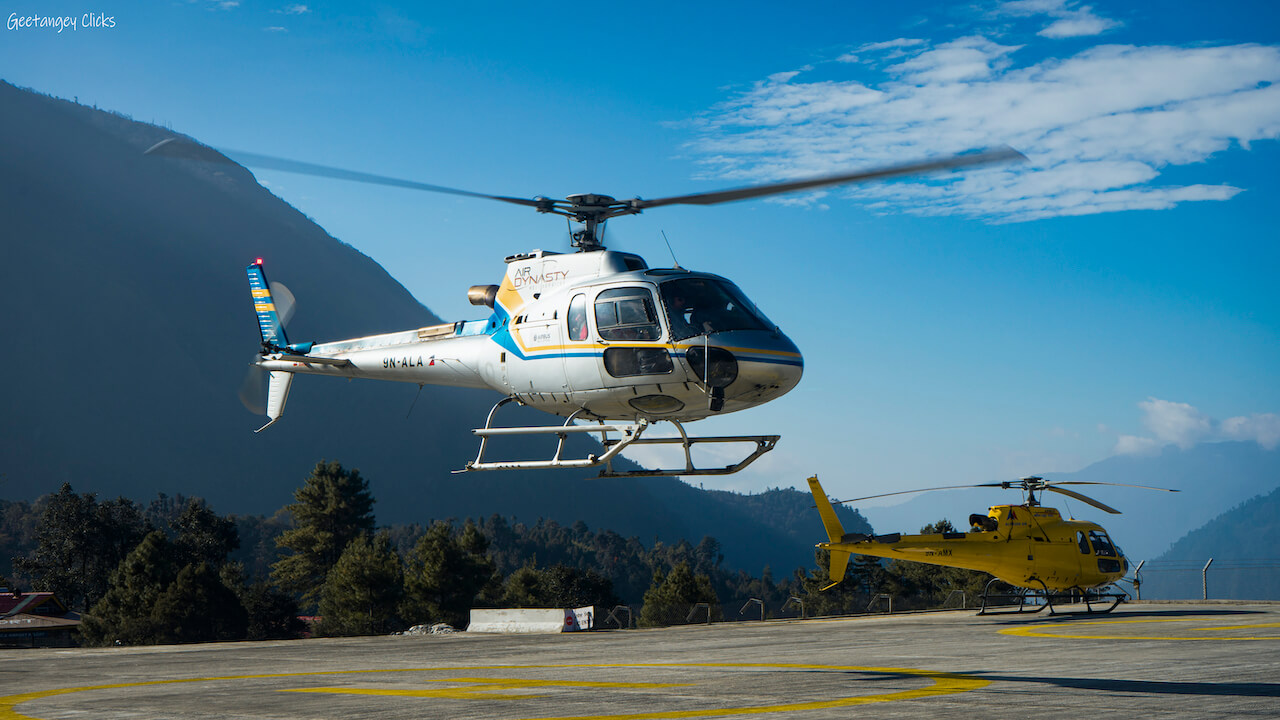In recent years, the allure of experiencing Mount Everest—the world's highest peak—has led to a surge in helicopter tours, offering tourists a swift and panoramic view of the majestic Himalayas. However, as of January 1, 2025, authorities have imposed restrictions on these helicopter flights in the Everest region. This decision has sparked discussions among environmentalists, local communities, and the tourism industry.
Reasons Behind the Ban Helicopter in Everest
- Environmental Concerns: The Sagarmatha National Park, a UNESCO World Heritage Site that encompasses the Everest region, has been adversely affected by the frequent helicopter flights. The constant noise disrupts the natural tranquility, affecting both wildlife and the pristine environment. The park's authorities have emphasized the need to preserve its unique ecosystem from the disturbances caused by incessant aerial traffic.
- Impact on Local Communities: Residents of the Khumbu region have raised concerns about the noise pollution from helicopters, which disrupts daily life and the serene ambiance essential for both locals and trekkers. Traditional trekking routes, which provide livelihoods for guides, porters, and teahouse operators, have seen reduced foot traffic as more tourists opt for helicopter tours. This shift threatens the economic stability of communities that have long depended on trekking tourism.
- Safety and Regulatory Issues: The rapid increase in helicopter flights has led to concerns about air traffic congestion and safety in the mountainous terrain. The Civil Aviation Authority of Nepal has highlighted the challenges in regulating the burgeoning number of flights, emphasizing the need for stricter controls to ensure passenger safety and airspace management.
Details of the Ban
The ban, effective January 1, 2025, prohibits all non-essential helicopter flights within the Sagarmatha National Park. Exceptions are made for emergency rescue operations, which remain crucial given the challenging terrain and the potential for altitude-related illnesses among trekkers and climbers.

The authorities have clarified that while cargo transportation by helicopters is restricted, essential supplies to support local communities and trekking activities will continue through traditional means, such as porters and pack animals. citeturn0search2
Reactions to the Ban
The decision has elicited mixed reactions. Environmentalists and conservationists have lauded the move, viewing it as a necessary step to protect the fragile ecosystem of the Everest region. They argue that reducing helicopter traffic will help preserve the area's natural beauty and biodiversity.
Conversely, stakeholders in the tourism and aviation sectors have expressed concerns. Helicopter operators fear significant financial losses, as Everest sightseeing flights constitute a substantial portion of their revenue. Some argue that the ban could deter tourists seeking a quick and less physically demanding way to experience Everest, potentially impacting Nepal's tourism industry. citeturn0search8
Future Implications
The ban underscores the ongoing tension between environmental conservation and tourism development. It prompts a reevaluation of how tourism is managed in ecologically sensitive areas. Sustainable tourism practices, such as promoting longer trekking routes and regulating the number of flights, may become more prevalent as stakeholders seek a balance between economic interests and environmental preservation.
For tourists, the ban means that traditional trekking remains the primary method to experience the Everest region. While this requires more time and physical effort, it offers a more immersive experience, allowing visitors to engage deeply with the local culture and environment.
The Role of Regulations and Enforcement
Nepal’s government has introduced several measures to curb helicopter tourism:
- Flight Permits: Only essential flights (e.g., rescues, government operations) are permitted within the Everest region.
- No-Fly Zones: Airspace above 6,500 meters and sacred sites like Tengboche Monastery are restricted.
- Penalties: Operators violating rules face heavy fines and license suspensions.
Despite these laws, illegal “joy rides” occasionally occur, highlighting the need for stricter enforcement.
Alternatives to Everest Helicopter Tours

While the ban may disappoint some, there are ethical and exhilarating ways to experience Everest:
Everest Base Camp Trek
The classic 12–14-day trek from Lukla to Everest Base Camp remains the most rewarding way to connect with the Himalayas. Travelers immerse themselves in Sherpa culture, traverse rhododendron forests, and acclimatize naturally to the altitude. Companies like Heli On Call partner with local guides to ensure treks are sustainable and community-focused.
Scenic Mountain Flights
Fixed-wing aircraft like the Everest Experience Flight from Kathmandu offer panoramic views of the Himalayas without landing in sensitive areas. These flights adhere to higher altitudes and eco-friendly practices.
Helicopter Tours to Safer Destinations
Nepal has other breathtaking regions where helicopter tours are permitted, such as Annapurna, Langtang, and Upper Mustang. These areas have robust ecosystems better equipped to handle limited air traffic.
Virtual Reality and Documentaries
For those unable to visit, advancements in VR technology provide immersive 360-degree experiences of Everest. Documentaries like Sherpa (2015) and Everest (1998) also capture the mountain’s mystique responsibly.
The Future of Everest Tourism

The Everest helicopter tour ban is a reminder that some places are too precious to exploit. As climate change reshapes the Himalayas (glaciers are retreating at alarming rates), sustainable tourism isn’t just an option—it’s an obligation.
By choosing ethical operators, minimizing waste, and honoring local customs, travelers can ensure Everest remains a beacon of inspiration for generations. The mountain has stood for millions of years; let’s ensure it stands proud for millions more.
In conclusion, the ban on Everest helicopter tours reflects a critical decision to prioritize environmental integrity and community well-being over rapid tourism growth. It serves as a reminder of the importance of sustainable practices in preserving the world's natural wonders for future generations.







